
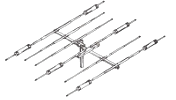
 |
Mosley Electronics |  |
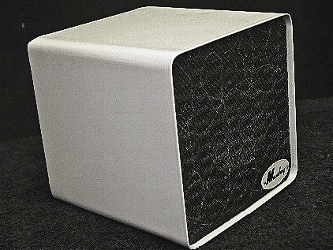 |
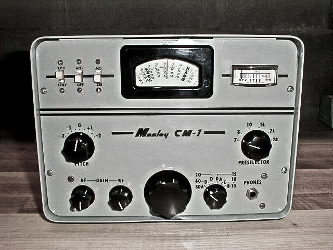 |
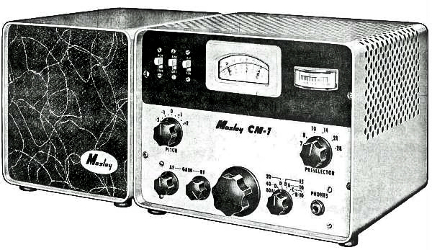 |
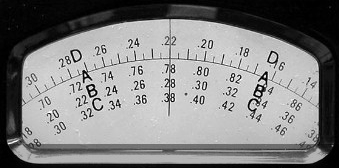 |
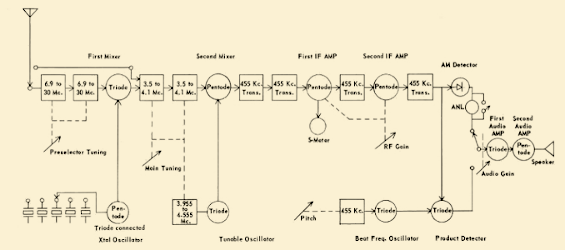 |
![]() About the CM-1 Receiver
About the CM-1 Receiver
The CM-1 was an interesting product for two reasons:
| "There is a lot more to the Mosely CM-1 story. Since it's one of my favorite receivers and Bob Heil's too - I would just refer you to this interview he did with with John Clemens W9ERN - W∅BD, the designer of the CM-1 for HamNation a few years ago. (Link opens in a new browser window)
The CM-1 is unique because of the performance it provides from a simple design, and because it is one of the few ham products from that time frame where the designer is still alive and able to provide his personal perspective." John talks to Bob Heil about the history and development of the CM-1 receiver. ➙ |
"I can tell U that there were two versions of the CM-1 ➙ Two tone paint and single tone grey."
Mosley Electronics, Inc. began reasonably early in the history "The Old Man" - Carl E. Mosley - W∅FQY, K∅AXS of radio, in the 1940's, when Mosley began making adapters for the 3/4" tube socket used extensively by amateurs at this time. The company name at this time was Mosley Electronic Specialties. Within a few months the business, which was operated from the Mosley basement, increased to the point where outside help was needed to stem the flood of orders.
It was at this time TV stations were being built over the entire country resulting in a need for TV installation accessories such as feed-thru insulators, wall outlets, and plugs. These items Mosley produced for the public, helping supply the growing need for commercially built TV accessories.
Over 65 years of quality know how and attention to detail. Citizens Band was introduced in 1958 necessitating the development of CB antennas. Mosley Electronics, Inc. put amateur radio antenna experience to good use by introducing a new quality line of antennas designed for the CBer. In 1962, Mosley Electronics, Inc. became located in West St. Louis County. It was around this time Mosley began producing another line of antennas -- business band antennas.
Decade after decade Mosley has lead the way in design and innovation. Present day, Mosley continues this tradition put forth some 60+ years ago by the Mosley family.
In 1951, Mosley began manufacturing the famous 'Vest Pocket' ham antenna. It was this year the company was incorporated under the name of Mosley Electronics, Inc. with Carl E. Mosley as president; and the factory was situated in Saint Louis. Later military and industrial antennas such as the WWV antenna for receiving time signals were developed adding another line to the already growing list of products produced by Mosley. About 1955, the incomparable 'Trap Master' TA-33 amateur beam was introduced becoming the standard by which all Tri-Band beams would be measured.
In 1998, the Amateur division was moved to a new facility in Union, Missouri. Over 65 years of quality know-how and attention to detail. With worldwide distribution and expansion into other markets, Mosley continues to be a world leader in HF antenna design and construction with an average product life of over 27 years in use.
No detail is overlooked in the constant Mosley effort to supply the greatest antenna values possible to the Amateur Market. It begins with the selection of materials known to be capable of surviving the rigors of world-wide climatic conditions . . . from artic icing to typhoon driven salt air. Such materials are used in all antennas. Quality is never sacrificed to bring a good price. Over 65 years of quality know-how and attention to detail.
Mosley offers you a wide line of Ham antennas from which to choose plus Short Wave Listening, Emergency Management, Business Band, and Commercial antennas.
![]() From the Mosley Electronics Inc. web site... (Link opens in new a browser window)
From the Mosley Electronics Inc. web site... (Link opens in new a browser window)
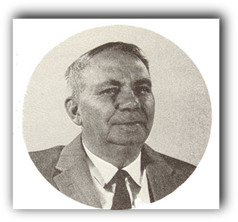 It was in 1918 in the Good Old Spark Days when Carl Mosley W∅FQY became a ham. At this time the counterpoise... an unwieldy maze of wires had been conceived as a most advanced ground system. Now today the TA-33-M and other ham antennas created by Mosley Electronics, Inc. are the DX'ers dream.
It was in 1918 in the Good Old Spark Days when Carl Mosley W∅FQY became a ham. At this time the counterpoise... an unwieldy maze of wires had been conceived as a most advanced ground system. Now today the TA-33-M and other ham antennas created by Mosley Electronics, Inc. are the DX'ers dream.
![]() Return to Radio Pictures
Return to Radio Pictures
![]() Return to MCRN Home
Return to MCRN Home